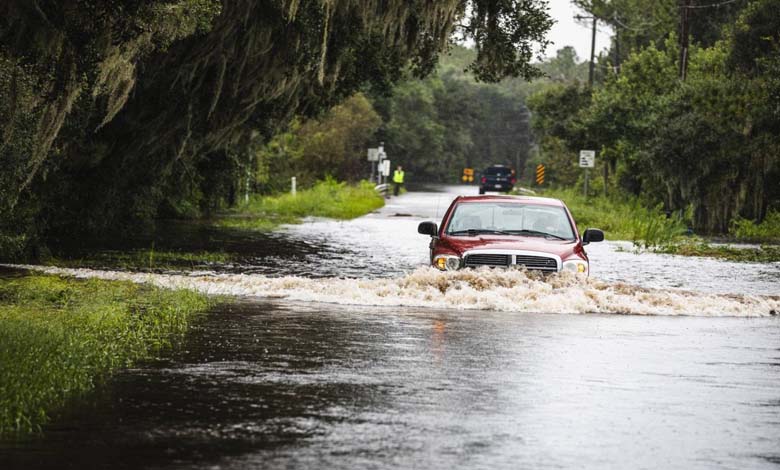Storm “Debbie” Causes 4 Deaths and Threatens the U.S. with Catastrophic Flooding

Tropical Storm Debbie, which made landfall in the U.S. on Monday morning with the force of a hurricane before weakening, has caused at least four deaths and now threatens to bring catastrophic flooding to the southern United States.
-
Infant Killed in Severe Flooding in Malaysia
-
In the first rainfall… Beirut roads face destructive flooding… Details
Local authorities reported that a 13-year-old boy died after a tree fell on his family’s mobile home in Fanning Springs, northwest Florida.
In Dixie County, in the same state, police announced that two people were killed in a car after the driver lost control due to bad weather and wet roads.
The fourth victim was a truck driver who died near Tampa after falling into a canal.
According to Agence France-Presse, Debbie, which became a tropical storm on Monday after making landfall, is expected to enter northern Florida on Monday before heading toward southern Georgia and then reaching the coast of that state and South Carolina by Tuesday evening, according to the U.S. National Hurricane Center.
After reaching speeds of 120 km/h, the storm’s wind speeds slowed to 85 km/h in the evening and are expected to continue decreasing, according to the National Hurricane Center.
The center warned that water levels could rise by up to about two meters in some coastal areas.
-
“Climate Change” Affects the Intensity of Rainfall and Hurricanes
-
Hurricane “Beryl” Sweeps Through Jamaica, Causing Massive Destruction and Casualties
The director of the National Hurricane Center, Michael Brannan, said that “the effects of Hurricane Debbie have just begun and will continue to be felt throughout the week in parts of the southeast coast.”
Hundreds of thousands of people have been left without power as the southeastern United States braces for potentially historic rainfall levels and major flooding.
Debbie made landfall in the Big Bend area of Florida as a Category 1 hurricane, the lowest on a scale of five ascending levels, due to unusually warm temperatures in the Gulf of Mexico. The National Hurricane Center said the maximum sustained wind speed had reached 130 km/h.
According to PowerOutage, a site that tracks power supply, more than 250,000 customers are currently without power.
The National Hurricane Center warned of life-threatening storm surges along the Gulf Coast of Florida with floods ranging from six to ten feet (1.8 to 3 meters) above ground level in some areas.
The center indicated that the storm could cause catastrophic flooding with “potentially historic heavy rainfall” as it moves northeast through Georgia and South Carolina over the next few days.
Florida Governor Ron DeSantis said at an emergency briefing on the hurricane Sunday: “We are facing the possibility of extremely significant flooding, particularly in north-central Florida.”
DeSantis and National Hurricane Center Deputy Director Jamie Rhome urged Florida residents to prepare quickly for the storm.
Mandatory evacuation orders were issued for part of Citrus County in Florida, with voluntary evacuation orders for eight other counties, according to local media.
Hurricane Debbie is expected to bring 6 to 12 inches of rain in parts of Florida, and up to 20 to 30 inches in coastal areas of Georgia and South Carolina before the end of the week, according to the National Hurricane Center.
-
The worst climate disaster: Rampant floods engulf southern Brazil
-
36 Killed in Road Collapse in Southern China
The governors of Georgia and South Carolina have declared states of emergency ahead of the hurricane’s arrival.
Authorities expect heavy rainfall for several days, with potentially record-breaking levels, and a high risk of severe flash flooding.
President Joe Biden approved the declaration of a state of emergency in Florida on Sunday, allowing federal aid to be expedited.
DeSantis also activated the state’s National Guard, with 3,000 of its members on alert to assist in responding to the storm.












